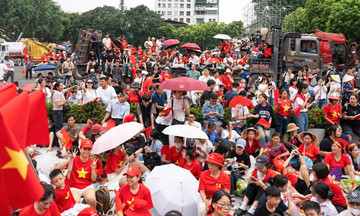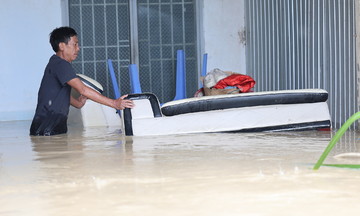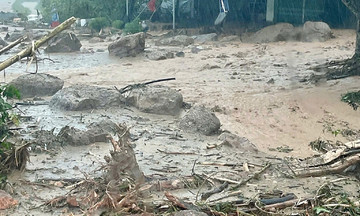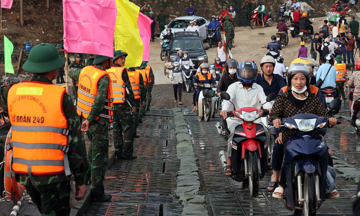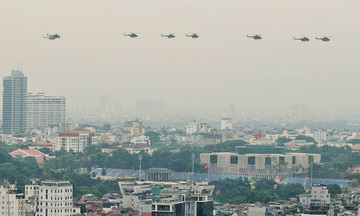Northern Vietnam experienced 20 days of rain in June, compared to 12 days in June 2024 and 13 days in 2023. The longest period of rain lasted 8 days (3-10/6), while other periods lasted 3 to 4 days. The heaviest rainfall occurred from 20-23/6 due to the influence of a compressed low-pressure trough combined with upper-level wind convergence, causing 100-200 mm of rain, with some areas receiving even higher amounts, such as Bac Quang (Tuyen Quang) with 340 mm and Thai Nguyen with 360 mm.
According to statistics from the National Center for Hydro-Meteorological Forecasting, the total rainfall in June in Son La reached 379 mm, surpassing the 1995 record by 11 mm; Thai Nguyen received 994 mm, exceeding the 1979 record by about 6 mm; Lang Son had 442 mm, surpassing the 1978 record by over 100 mm; and Bac Giang recorded 562 mm, exceeding the 1986 record by more than 50 mm.
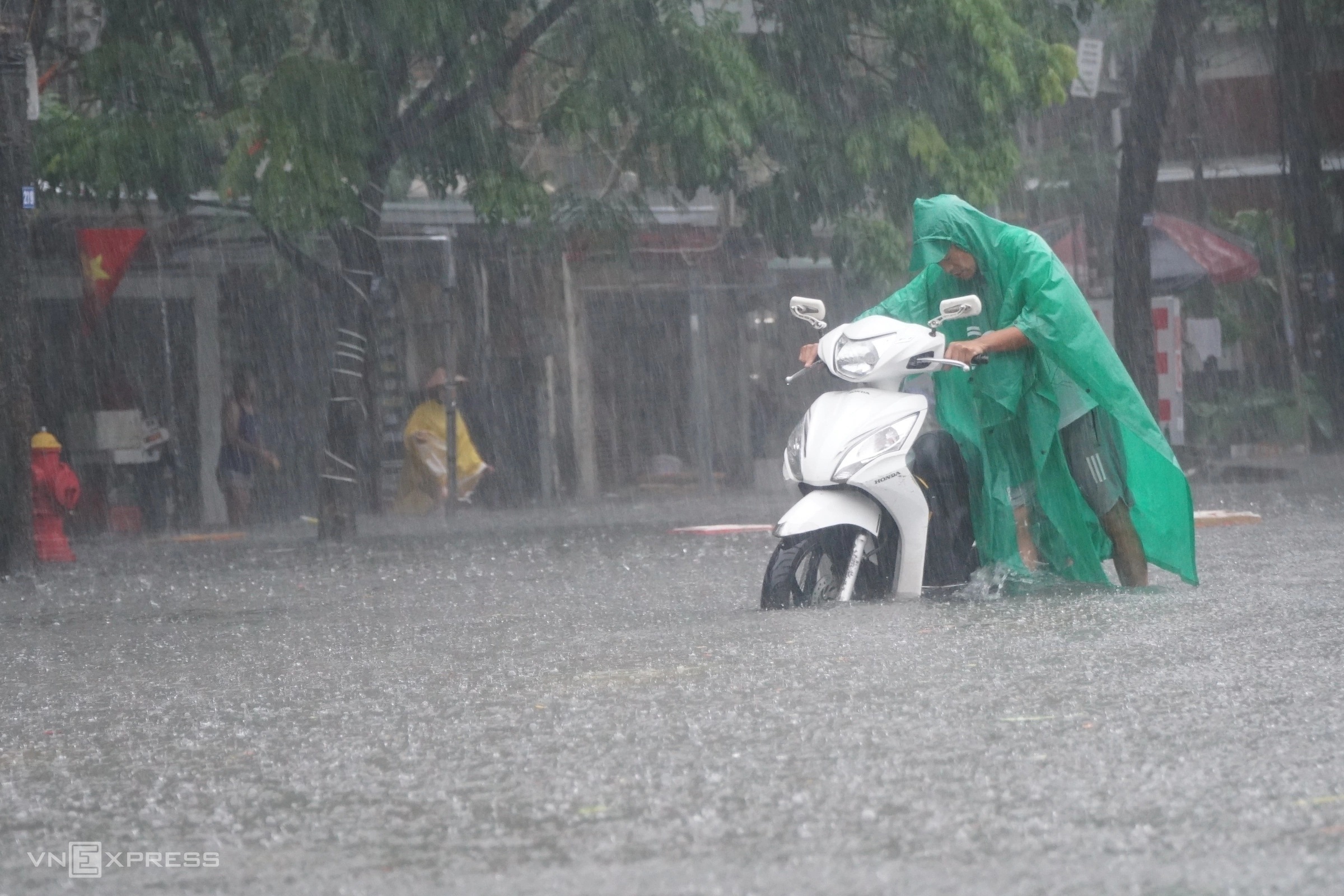 |
Torrential rain on Le Lai street, Hai Phong City, June 2024. Photo: Le Tan |
Torrential rain on Le Lai street, Hai Phong City, June 2024. Photo: Le Tan
Due to the abundant rainfall, northern Vietnam experienced a relatively mild summer. The meteorological agency reported three heat waves (with daily high temperatures exceeding 35 degrees Celsius) in June, but none were prolonged. The first heat wave occurred from 1-2/6, the second from 6-8/6, and the third from 14-15/6.
The average temperature nationwide in June was approximately the long-term average (27.6 degrees Celsius), with no record-breaking heat events. Compared to June 2024, the average temperature in northern Vietnam was generally 0.5-1 degrees Celsius higher than the long-term average. In June 2023, the country experienced 4 heat waves, resulting in an average temperature 0.5-1 degrees higher than the long-term average, with 22 temperature records set.
May 2025 was also cool in northern Vietnam, with 4 rain spells totaling 11 days and two heat waves that were not widespread. The first heat wave, from 5-9/5, occurred in the Northwest, Northeast, and some areas of the Red River Delta; the second heat wave affected Son La and Hoa Binh from 20-21/5.
The average temperature in northern Vietnam in May was approximately the long-term average (26.2 degrees Celsius), except for the southern Red River Delta, where it was 1-1.5 degrees Celsius higher than the same period in 2024.
Thus, northern Vietnam experienced two cool summer months, May and June, consistent with the early-season forecast of a less intense summer this year.
The National Center for Hydro-Meteorological Forecasting predicts that northern Vietnam will continue to experience hot weather in July and August, with temperatures gradually decreasing from September. The average temperature from July to September is expected to be close to the long-term average for the same period. Total rainfall is generally expected to be 20-50% higher than the long-term average for the same period.
Gia Chinh






